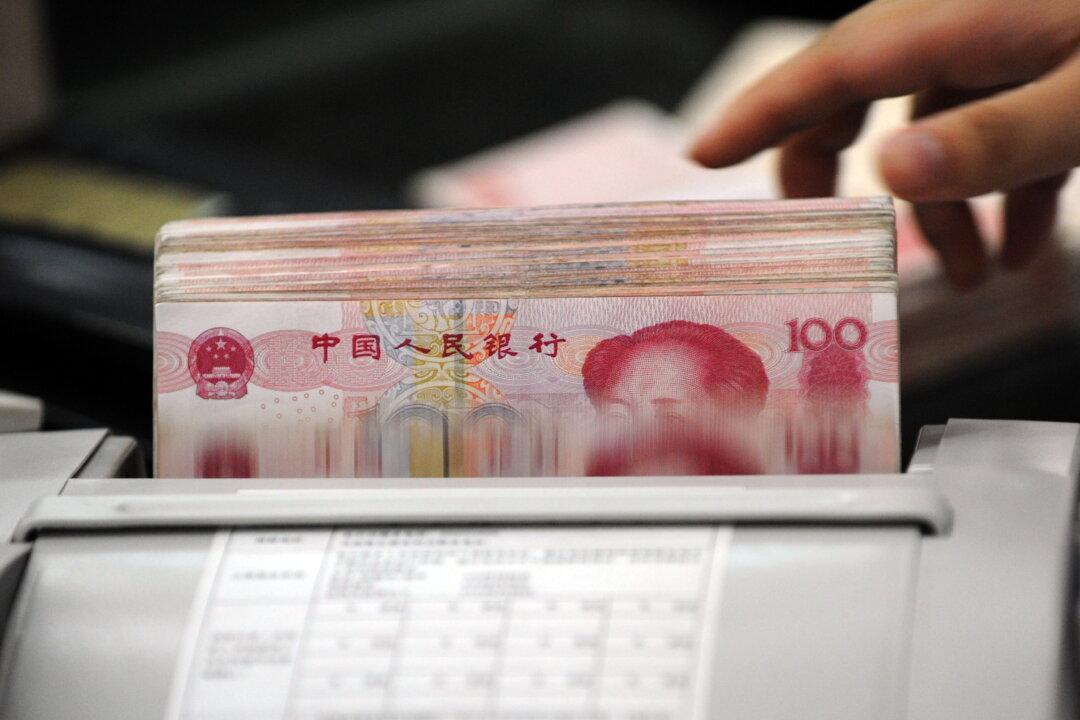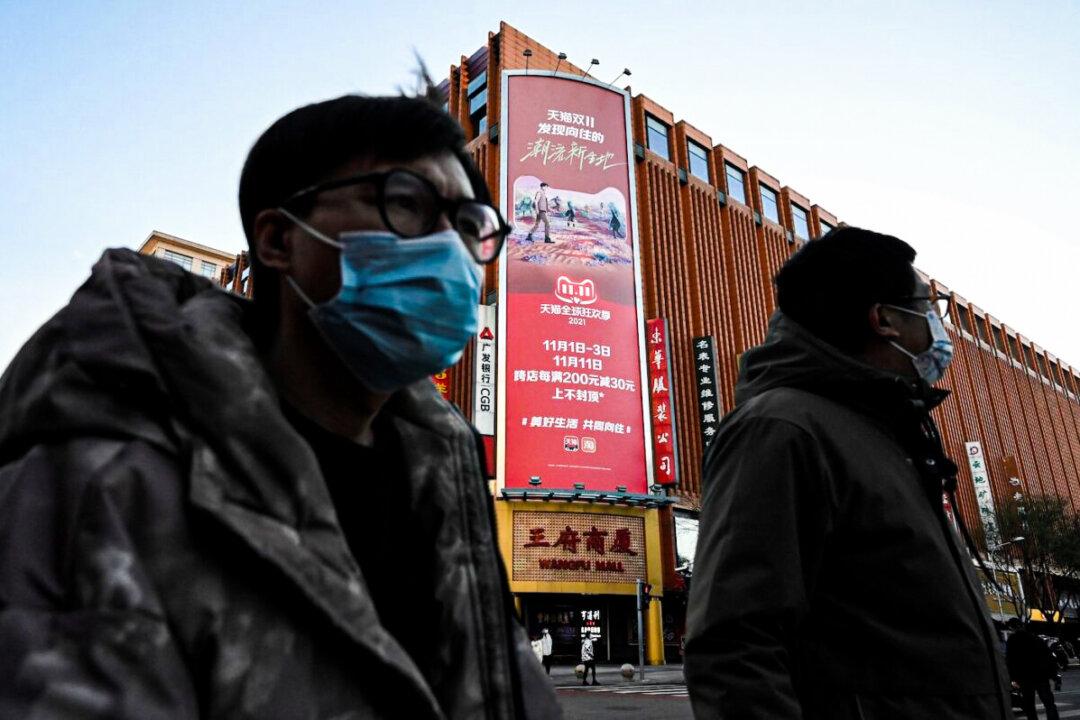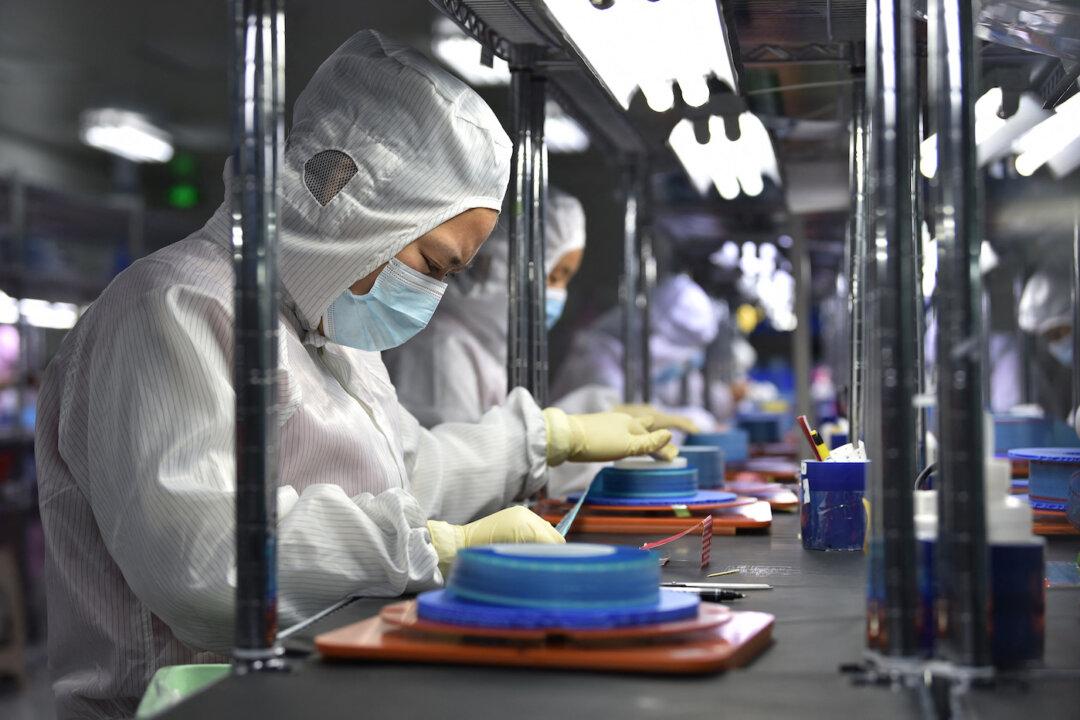China’s money supply had a net increase of 11 percent from 2013 to 2014, an increase that is significantly higher than the country’s economic growth. In 2014 it reached 122.84 trillion yuan (US$18.05 trillion), compared with 110.7 trillion (US$17.71 trillion) by the end of 2013. Of China’s 12.14 trillion added currency (US$1.94 trillion) in 2014, 9.78 trillion yuan (US$1.56 trillion), over 80 percent, was used for creating new loans. Not only was it 890 billion (US$142 billion) higher than that in 2013, but also broke the 2009 record of 9.59 trillion (US$1.53 trillion) by 190 billion (US$30 billion) more.
So much new money was printed. Where did it all go? The majority of the loans did not flow into the economy, but went into non-production areas, namely the financial market.
Massive Money Printing
The Research Center for China Market Value Management Ltd. brought two pieces of good news about the Chinese economy in its 2014 annual report on A-shares stock market value, published on January 24. Firstly, the total market value of A-shares reached 37.11 trillion yuan (US$5.94 trillion) last year, exceeding Japan to become the world’s second largest stock market, next to U.S. Secondly, China’s securitization ratio reached 58.3 percent (derived from 37.11 trillion yuan of A-shares divided by a total GDP of 63.65 trillion yuan), far more than the 40.1 percent in 2013, bringing China one step closer to the securitization ratio of the U.S.
That good news, however, needs a bit of scrutiny. Chinese people in the securities industry like to point to the low securitization ratio to show that the Chinese stock market still has much room for development. The goal is to catch up and exceed the securitization ratio of the United States. That kind of comparison has neglected two factors. One is that the U.S. stock market is a global stock market, with its market value being supported by global capital. China’s A-shares stock market, on the other hand, has funds mainly coming from domestic sources. Moreover, there are fake foreign investments, i.e., domestic capital went out of the country through various channels and flew back in. The second factor is that the U.S. stock market is based on a sound credit system, while China’s credit system has too many defects, including constant fraud and weak penalties. Under such circumstances, a high securitization ratio often means a bigger bubble in the stock market and stronger speculation.
Second of all, retail investors have become losing buyers again. According to the market value annual report, important shareholders and executives of 1284 companies listed in Shanghai and Shenzhen stock markets sold 221.8 billion yuan (US$35.48 billion) worth of stocks. Among them, the executives received 64.1 billion yuan (US$10.26 billion) of cash from selling their stocks, making a historical record. Such urgent selling indicates a coping strategy for when CCP leader, Xi Jinping’s anti-corruption campaign reaches state enterprises. More than ten years ago during the reform of state enterprises, many executives acquired shares through management buyout (MBO). In order to avoid losing their extorted wealth, they are trying to cash out in a hurry in every possible way.
Large Amounts Enter Debt Cycle
Tens of trillions of new money was printed after a 4 trillion yuan (US$640 billion) stimulation package in 2009. Local governments happily spent money and officials happily extorted money. Local governments have since been deeply buried under debt, but they knew too well that the central government would bail them out, which it did.
On September 21, 2014, the Chinese regime issued its Opinions of the State Council on Strengthening the Administration of Local Government Debt order. It requested local governments to report their outstanding debt at the end of 2014, classify the debts and include them in the 2015 budget, and coordinate funds to pay off first maturing debts.
In the past local officials tended to hide the actual figures of their debt because they were concerned about their performance and worried about losing their positions. According to Li Tie, an official from China’s National Development and Reform Commission, the local governments reported 18 trillion yuan of debt in total. Li estimated that the number was only 30 to 40 percent of the actual number.
Once the regime announced its countermeasures for managing the debt, local governments reacted quickly and reported all kinds of numbers, leading to instant explosive escalation of the debt level. That shocked central government officials. The Chinese regime’s Ministry of Finance then issued an announcement on Jan. 29, 2015, urging local government officials to review and reduce the reported numbers to spare any future scrutiny.
That maneuver is probably not necessary, however, as local governments long ago figured out how to make new loans to pay back old ones. That is how they continue in their corruption and at the same time keep the local banking system running.
Why would banks have to comply with the requests of local governments? Hyper competition among banks is the key. Banks rely on governments to provide two resources: First, to deposit of government funds. Government is the biggest customer of the banks and government officials can decide where to locate the government funds. The second resource is local operation permits. The ecosystem forced banks to play the local governments’ loaning game. The outcome is rapid increase in debts and the escalating threat of bankruptcy.
Capital Escape Overshadows Capital Export
China’s foreign investment underwent rapid growth since 2013. In a celebratory tone, its Ministry of Commerce boasted that the country has become a net capital exporting country and that the investment of Chinese capital around the world marked the ever-increasing importance of China’s position in the global economy. In the meantime international financial institutes were becoming more alert about the worsening problem of capital escaping from China.
Let us first examine the laurel of “net capital exporting country.” Starting in 2012, China was ranked among the top three countries that made capital investments in other countries. In 2013, direct investment from China in foreign countries demonstrated a 22.8 percent increase and hit a record high with US$ 107.84 billion. In 2014, it reached US$ 140 billion, which was US$ 20 billion more than the foreign investment in China. The regime’s Ministry of Commerce proudly proclaimed that China had become a net capital exporting country, with the U.S. being the largest capital receiver. That achievement was reported by the Chinese edition of Wall Street Journal on Jan. 22, 2015. The report, titled “Will Cheap Capital from China Flood the Global Market?”, said that Chinese capital accounted for 26 percent of global investment now and that number was 4 percent in 1995. As a comparison, the share of U.S. capital in the global investment peaked at 35 percent in 1985 and was less than 20 percent at present.
Just when the Ministry of Commerce was celebrating the fact of becoming a “net capital exporting country,” the Chinese regime’s central bank reacted rather differently, with annoyance at the continuous loss of capital. On Feb. 5, 2015, the central bank announced a decrease of the required reserve ratio, which would free monetary fluidity up to 600 billion yuan (or US$ 96.4 billion).





